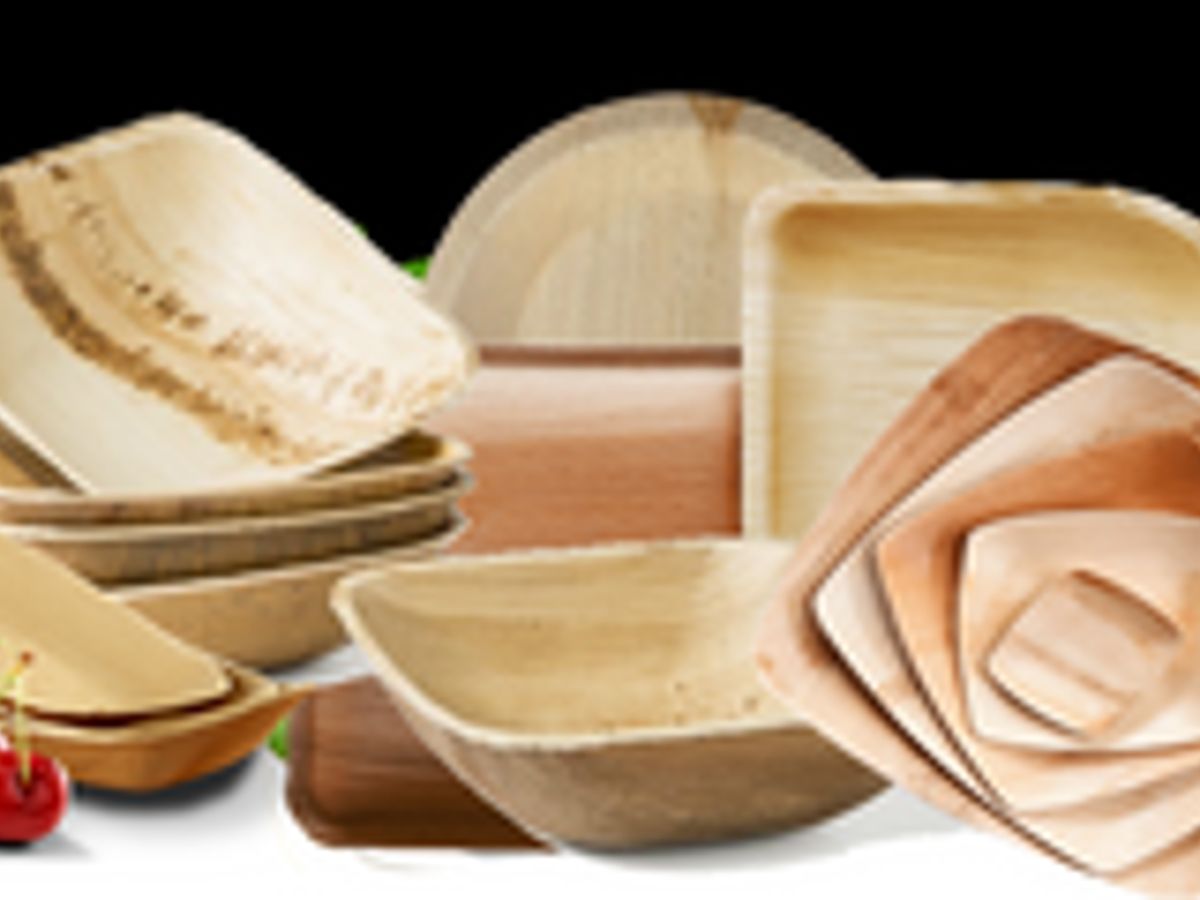The Rise of Leaf Plates: Sustainable Dining Solutions for a Greener Planet

In a world that’s becoming more aware of its environmental footprint, the shift to sustainable dining options is gaining momentum. Leaf plates, a natural and eco-friendly alternative to traditional dining ware, are making waves globally. These plates, crafted from various types of leaves, offer a green solution that benefits both the planet and its people. This article explores the rise of leaf plates, their benefits, and how they can be integrated into everyday life.
Key Takeaways
- Traditional dining ware like plastic and ceramic has a significant environmental impact.
- Leaf plates are made from natural materials and are biodegradable.
- Using leaf plates reduces plastic waste and supports eco-friendly practices.
- The production of leaf plates can provide economic benefits to local communities.
- Adopting leaf plates can be a simple step towards a more sustainable lifestyle.
The Environmental Impact of Traditional Dining Ware

Plastic and Its Long-term Effects
Plastic dining utensils and tableware have a significant impact on the environment. These items are not biodegradable and can take hundreds of years to break down. As a result, they often end up in landfills or oceans, causing harm to wildlife and marine life. The production of plastic also involves the use of fossil fuels, contributing to greenhouse gas emissions and climate change.
The Carbon Footprint of Ceramic and Glass
While ceramic and glass tableware are more durable than plastic, their production processes are energy-intensive. The high temperatures required to manufacture these items result in a substantial carbon footprint. Additionally, the mining of raw materials for ceramic and glass can lead to habitat destruction and soil erosion, further impacting the environment.
Deforestation and Paper Products
Paper products, such as disposable plates and cups, contribute to deforestation. Trees are cut down to produce these items, leading to loss of biodiversity and disruption of ecosystems. Although some paper products are compostable, the chemicals used in their production can still harm the environment. Moreover, the energy and water required for paper manufacturing add to its environmental impact.
By understanding the environmental impact of traditional dining ware, we can make more informed choices and opt for sustainable alternatives like areca palm leaf plates. These eco-friendly options not only reduce waste but also promote a healthier planet.
What Are Leaf Plates?

Materials Used in Leaf Plates
Leaf plates are made from natural materials, primarily areca palm leaf. These leaves are collected from the areca palm tree, which sheds its leaves naturally. This makes the process sustainable and eco-friendly. Other materials used include banana leaves and bamboo, but areca palm leaf plates are the most popular due to their durability and availability.
Manufacturing Process
The manufacturing process of leaf plates involves several steps:
- Collection: The fallen leaves are collected from the ground.
- Cleaning: The leaves are thoroughly cleaned to remove dirt and impurities.
- Pressing: The clean leaves are then pressed into shape using heated molds.
- Trimming: The edges are trimmed to give the plates a neat finish.
- Quality Check: Each plate is inspected to ensure it meets quality standards.
This process is simple yet effective, making it easy for areca palm leaf manufacturers to produce these plates in large quantities.
Cultural Significance
Leaf plates have been used for centuries in various cultures around the world. In India, for example, they are commonly used during festivals and religious ceremonies. The use of leaf plates is not just a nod to tradition but also a step towards sustainable living. They are biodegradable and compostable, making them an excellent alternative to plastic and other non-biodegradable materials.
Benefits of Using Leaf Plates

Biodegradability and Composting
Leaf plates, especially those made from areca palm leaves, are highly biodegradable. Unlike plastic, which can take hundreds of years to decompose, leaf plates break down naturally within a few months. This makes them an excellent choice for composting, contributing to a healthier environment.
Reduction in Plastic Waste
Using leaf plates can significantly reduce the amount of plastic waste generated. Traditional plastic plates often end up in landfills, where they can take centuries to decompose. By switching to leaf plates, we can cut down on this waste and help protect our planet.
Economic Advantages for Producers
The production of leaf plates, particularly by areca palm leaf manufacturers, offers economic benefits to local communities. These plates are often made in small-scale industries, providing jobs and supporting local economies. Additionally, the natural and organic materials used in these plates are usually sourced locally, further boosting the economy.
| Benefit | Description |
|---|---|
| Biodegradability | Breaks down naturally within months |
| Plastic Waste Reduction | Helps cut down on long-lasting plastic waste |
| Economic Advantages | Supports local communities and small-scale industries |
Switching to leaf plates, such as areca palm leaf plates, is a simple yet effective way to make a positive impact on the environment and support local economies.
How Leaf Plates Are Made
Harvesting and Preparing Leaves
The journey of making leaf plates begins with harvesting the right leaves. For instance, areca palm leaves are commonly used due to their durability and availability. These leaves are collected once they naturally fall to the ground, ensuring no harm to the trees. After collection, the leaves are thoroughly cleaned to remove any dirt or debris.
Pressing and Shaping Techniques
Once the leaves are clean, they are pressed and shaped into plates. This process involves placing the leaves in heated molds that press them into the desired shape. The heat not only shapes the leaves but also sterilizes them, making them safe for food use. Skilled artisans often oversee this process to ensure each plate meets quality standards.
Quality Control and Standards
Quality control is a crucial step in the production of leaf plates. Each plate is inspected for defects such as cracks or uneven surfaces. Only plates that pass this rigorous inspection are packaged and sent to market. This ensures that consumers receive high-quality, durable plates that are both functional and eco-friendly.
By understanding the process of making leaf plates, we can better appreciate the craftsmanship and sustainability behind these eco-friendly dining solutions. For those interested in sustainable products, exploring top areca palm leaf manufacturers can provide more insights into this innovative industry.
Adoption of Leaf Plates Around the World
Case Studies from Different Countries
Leaf plates, especially those made from the areca palm leaf, have seen a rise in popularity across various countries. In India, for instance, these plates are not only used in households but also in large-scale events and festivals. Germany has also embraced these eco-friendly alternatives, with many restaurants and cafes opting for them to reduce plastic waste. In the United States, the trend is catching on, particularly in eco-conscious communities and among businesses that prioritize sustainability.
Government Policies and Incentives
Governments around the world are recognizing the environmental benefits of leaf plates. In India, several states have introduced policies that encourage the use of areca palm leaf plates by offering subsidies to areca palm leaf manufacturers. Similarly, the European Union has set targets to reduce plastic waste, which has indirectly boosted the adoption of leaf plates. In the United States, some cities have banned single-use plastics, making leaf plates a viable alternative.
Consumer Acceptance and Trends
Consumer acceptance of leaf plates is growing, driven by increasing awareness of environmental issues. Many people are now choosing leaf plates for their biodegradability and composting benefits. A survey conducted in 2022 showed that 70% of respondents were willing to switch to leaf plates if they were readily available. This trend is also reflected in the market, with a noticeable increase in the number of businesses offering leaf plates. The versatility and eco-conscious nature of these products make them a preferred choice for events and sustainable living.
Challenges and Future Prospects
Supply Chain and Scalability Issues
One of the main challenges in the widespread adoption of leaf plates is the supply chain and scalability issues. The production of leaf plates, especially those made from the areca palm leaf, requires a steady supply of raw materials. This can be difficult to maintain, especially in regions where the areca palm does not naturally grow. Additionally, scaling up production to meet global demand can be a significant hurdle for areca palm leaf manufacturers.
Overcoming Consumer Skepticism
Another challenge is overcoming consumer skepticism. Many people are still unfamiliar with leaf plates and may doubt their durability and practicality. Educating consumers about the benefits and reliability of areca palm leaf plates is crucial. Highlighting their biodegradability and the reduction in plastic waste they offer can help shift consumer perceptions.
Innovations and Technological Advances
The future of leaf plates looks promising, thanks to ongoing innovations and technological advances. Researchers and manufacturers are continually exploring new ways to improve the quality and production efficiency of leaf plates. For instance, advancements in pressing and shaping techniques can lead to more durable and aesthetically pleasing products. Additionally, innovations in quality control and standards ensure that leaf plates meet consumer expectations and regulatory requirements.
In conclusion, while there are challenges to the widespread adoption of leaf plates, the future holds great promise. By addressing supply chain issues, overcoming consumer skepticism, and embracing technological advances, leaf plates can become a viable and sustainable alternative to traditional dining ware.
How to Incorporate Leaf Plates into Your Lifestyle

Choosing the Right Type of Leaf Plates
When selecting leaf plates, it’s important to consider the type of leaf used. Areca palm leaf plates are a popular choice due to their durability and natural look. They are made from fallen leaves, making them an eco-friendly option. Look for reputable areca palm leaf manufacturers to ensure quality and sustainability.
Caring for and Disposing of Leaf Plates
Taking care of your leaf plates is simple. After use, you can rinse them with water and let them air dry. If you need to dispose of them, remember that they are biodegradable and can be composted. This makes them a great alternative to plastic and styrofoam plates.
Combining Leaf Plates with Other Sustainable Practices
Using leaf plates is just one step towards a greener lifestyle. You can also:
- Use reusable bags instead of plastic ones.
- Choose products with minimal packaging.
- Support local and sustainable businesses.
By combining these practices, you can make a significant impact on the environment.
Conclusion
In the end, leaf plates are more than just a trend. They are a step towards a cleaner and greener world. By choosing these plates, we can reduce waste and protect our planet. It’s a simple change that can make a big difference. Let’s embrace this eco-friendly option and help make our Earth a better place for future generations.
Frequently Asked Questions
What are leaf plates made from?
Leaf plates are made from natural leaves, like those from the areca palm or banana plants. These leaves are cleaned, molded, and dried to form sturdy plates.
Are leaf plates safe to use with hot food?
Yes, leaf plates are safe to use with hot food. They can handle hot meals without breaking or releasing harmful chemicals, unlike some plastic plates.
How long does it take for a leaf plate to decompose?
Leaf plates decompose much faster than plastic. Depending on the environment, they can break down in a few weeks to a few months.
Can I reuse leaf plates?
Leaf plates are generally designed for one-time use. However, if they are not too soiled, you might be able to rinse and reuse them a few times.
Where can I buy leaf plates?
You can find leaf plates online, in eco-friendly stores, or at some supermarkets. They are becoming more popular, so they are easier to find now.
Do leaf plates cost more than regular plates?
Leaf plates might cost a bit more than plastic plates, but they are often cheaper than ceramic or glass. Plus, they are better for the environment, which is a big bonus.


